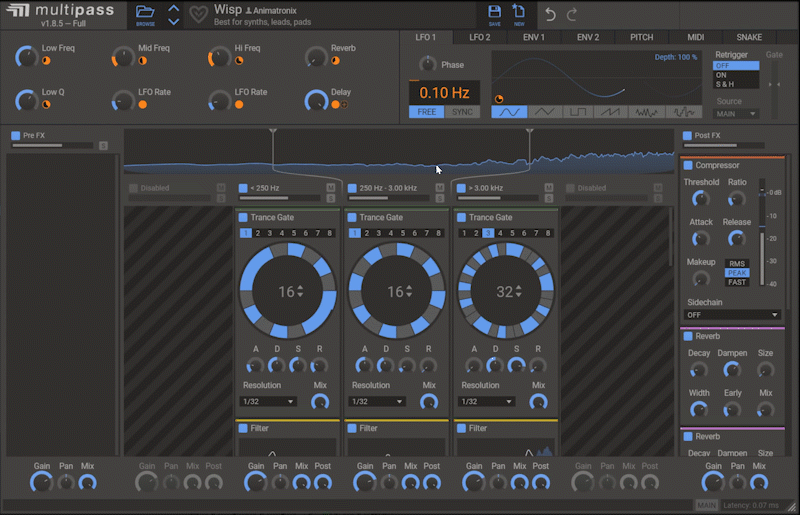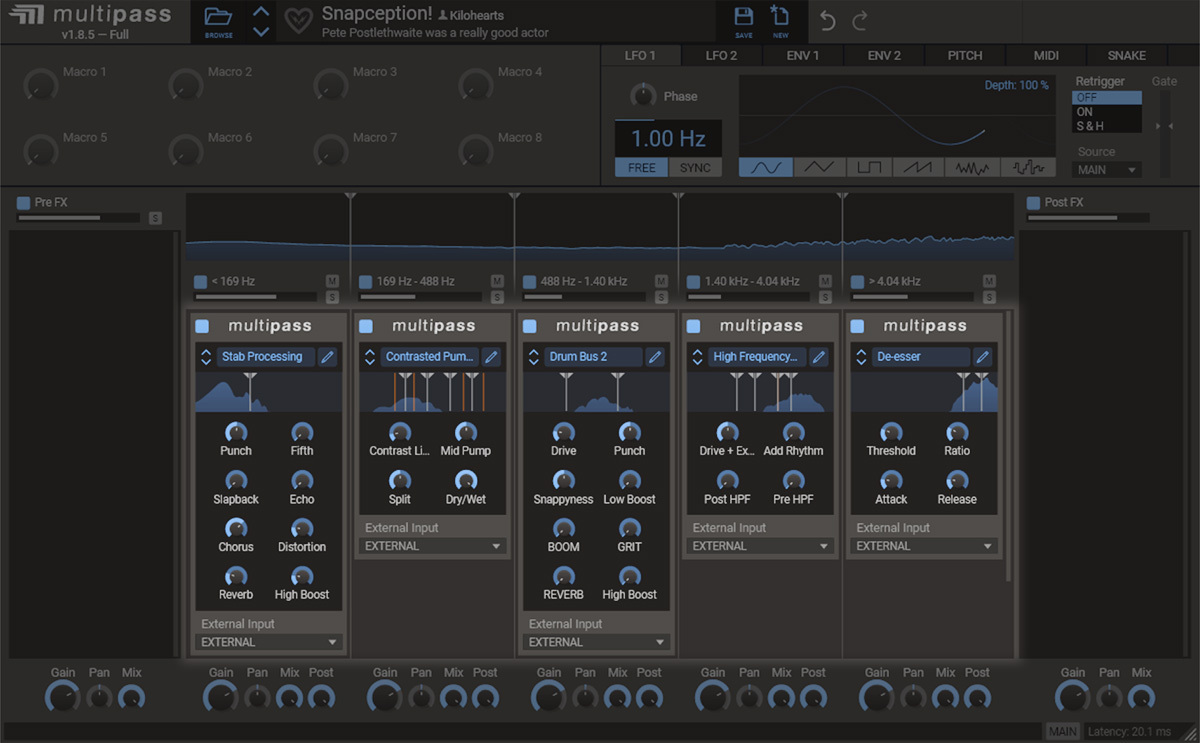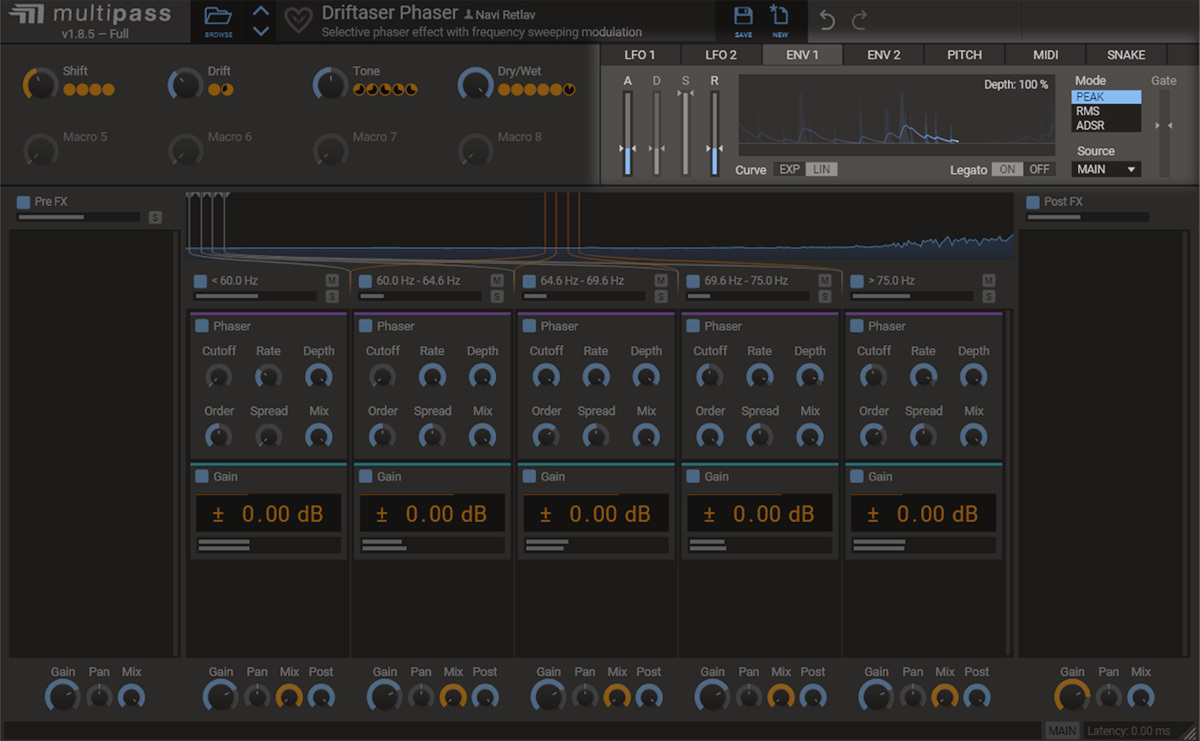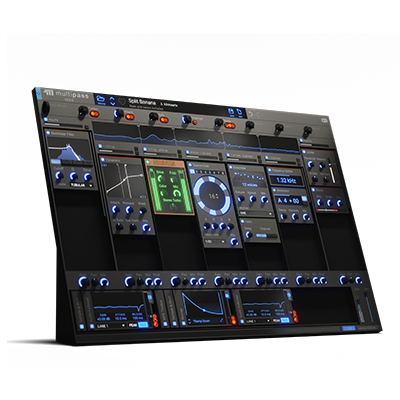Multipass is a band-splitting Snapin host, which allows you to use our plethora of Snapin effects to create your own custom multiband processors. Here are five things you may not have known about Multipass.
1. All presets work even if you don't own all the Snapins
It's possible to insert any of our Snapin effects into Multipass to build all kinds of weird and wonderful multiband effects. We offer a bunch of these for free (including Snap Heap, another modular Snapin host), but you'd be forgiven for thinking the more complex and powerful patches were out of reach until you build up your collection.
Not so!
All of the 200+ factory presets (and any other presets you can get your hands on) are fully-functional, whether you own the relevant Snapins or not. The only limitation is that you can't tweak settings directly on Snapins you don't yet have a license for. So a ton of sophisticated processing is available right off the bat.
Hint: If you want to share a preset you’ve built with a friend who doesn’t own all the Snapins you’ve used, you can assign macros to some of the most useful parameters and those will be available for them to adjust, modulate and automate!
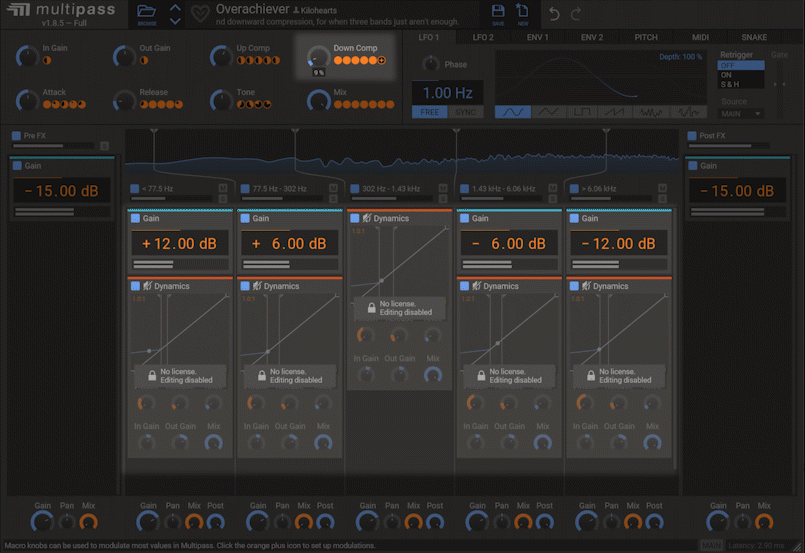
Synchronised multiband dynamics... it's a beautiful thing!
2. You have multi-out functionality
Multipass is the quintessential multiband modular effects laboratory, but the fun doesn't have to end inside the plugin. In addition to the regular stereo output, you can route the audio from each individual frequency band to up to five aux outputs. Just click the button that says 'MAIN' at the bottom right of the plugin to cycle through the options.
This means that you can continue processing your split bands with third party plugins on separate mixer tracks in your DAW, mix and sum them independently, or use them as focused sidechain inputs for other things.
Hint: You can be sure your separate bands will sum correctly within Multipass. But when adding other effects to separated bands externally you may get some odd results if latency isn’t correctly managed… so keep an eye (or ear) out for that!
3. Multipass is also a Snapin
Things can get ultra-creative when you start using Multipass itself as a Snapin within any one of our modular hosts. Try Multipass in the effects lanes of our award-winning synth, Phase Plant, for highly customisable and kinetic multiband manipulation. Or in Snap Heap – our 100% free and 100% elegant way to build serial or parallel modular effects units.
You can even get fractal and load Multipass within Multipass within Multipass and so on. Some call this... Snapception!
Don’t forget that Snap Heap, which is FREE (did we mention that?), will also load as a Snapin in any host and comes with 100+ fully-functional presets for all kinds of effects, such as reverb, distortion, delays and more.
4. There are input following modulators
A powerful way to affect your sound is with its own information. The envelope followers, for example, generate envelopes based on the amplitude of the incoming signal, which can then be used to modulate the amount of distortion for a crispy dynamic drive effect.
Meanwhile, you can use the pitch-tracking modulators to get a filter cutoff following the melody. Or bring your MIDI controller of choice into play and modulate parameters with Note, Velocity, and Pressure, as well as the pitch and mod wheels.
Your mix is now an instrument. Play hard. Or soft. Hey, it's your thing.
5. You can use sidechain input too!
Our obsession with modulation innovation means that the options keep getting more plentiful and more refined with every Kilohearts update (We’ve got some great modulation stuff coming for you, just you wait!).
You may not have noticed but anywhere you can use the source signal as an input to control something (such as the envelope and pitch followers described in #4 above) you can also choose to use a sidechain input, or any of the five bands' audio (pre-effects).
Sidechain a drum track in to control the distortion levels on a synth. Use your low mids to generate an envelope modulating the position of a resonator higher up. Have the amplitude of your high frequencies affect the crossover frequency between your two lowest bands... If you can dream it, chances are you can do it in Multipass.
BONUS: Snek!
There’s a not-very-secret secret game hidden amongst the multiband magic. Take a break from your current masterpiece and rest your ears whilst sharpening your gaming skills.
Find, enjoy, smash the high score. It’s all in a day’s work.

